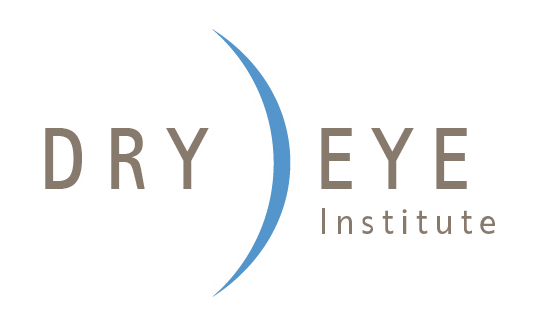
Millions of people in the U.S. prefer contact lenses over glasses because they are more convenient and improve vision without changing overall appearance. However, prolonged use, among other factors, can result in dry eye syndrome. The condition causes eye irritability, redness, and burning sensations, as well as makes wearing contacts uncomfortable. The doctors at the Dry Eye Institute of St. Louis are experts in their field and have both the knowledge and technology needed to determine the root cause of each patient’s condition as well as properly treat it.
What is Contact-Induced Dry Eye?
The cornea, or the front of the eye, is the only area of your body that absorbs oxygen directly from the air. However, those that wear contact lenses are predisposed to dry eye syndrome due to the fact that each lens can partially block oxygen from entering the eye. Many contact lenses are manufactured to allow greater amounts of oxygen to reach the cornea, but wearers can still experience symptoms, especially near the end of each day.
Another common cause of contact-induced dry eye is the lenses’ absorption of natural tears. Contact lenses need liquid to stay soft and maintain their shape. If a patient does not adequately lubricate their eyes with artificial tears (eye drops), or their natural tears do not provide enough moisture, it is likely they will experience symptoms. A shortage of fluid can lead to gaps in the tear film, thus accentuating irritability from the lenses.
Dry Eyes and Contact Lenses: The Options
Having dry eye syndrome due to contact lenses does not mean you can no longer wear them. Recent developments in lenses and contact solutions have proven to lessen the intensity of symptoms in numerous patients. For some, the symptoms have even disappeared entirely. Since no two patients’ needs are the same, several options for treatment are available.
Soft Contact Lenses
Soft lenses are made from a flexible plastic material that allows oxygen to pass through to the eye. Additionally, they permit the lenses themselves to hold water. The contacts can be worn for varying lengths of time, whether they be one-day disposables, or extended lenses for 30-day wear. However, changing lenses daily prevents the formation of protein deposits, which can make the eyes feel even drier.
Soft contact lenses are categorized by how much water they contain. Contrary to popular belief, high-water content lenses are more likely to cause dry eye than those with low-water content. With that said, they tend to send more moisture to the eye when you first place them, but can dry out much faster when compared to low-water content lenses. Depending on the severity of your dry eye, you may have to test several types of contact lens water content options before finding the right pair.
Silicone Hydrogel Contact Lenses
Silicone hydrogel lenses are made from the most innovative contact materials in the market. They are much more breathable than traditional lenses because they permit up to five times more oxygen to reach the cornea. Therefore, silicone hydrogel lenses can be worn for lengthier periods of time while reducing dryness and increasing comfort. However, they are generally more expensive than other options and may take longer to alleviate symptoms.
Scleral Lenses for Dry Eye
Most contact lenses measure approximately nine millimeters across, only covering the iris (the colored portion of the eye). Scleral lenses, however, are typically 15 to 22 millimeters across, and therefore cover a much greater surface area. As stated in their name, scleral lenses encompass the entire white area of the eye, called the sclera. Additionally, they are gas-permeable, meaning that oxygen can easily reach the eye. Our optometrists, Dr. McCoy, Dr. Weis, and Dr. Bourn, specialize in contact lens fittings, so rest assured that we’ll assist you in finding the perfect fit.
Contact Solution for Dry Eyes
In some situations, your dry eye symptoms are not caused by your contact lenses. When that is the case, it may be the solution you are utilizing. Some contact solutions contain preservatives that can irritate your eyes and leave them dry. Others might contain substances that do not cooperate with certain soft lenses and can thus cause an irritating reaction. Furthermore, avoid reusing your contact solution. Doing so decreases the effectiveness of its disinfecting properties, which can lead to inflammation and infection.
Orthokeratology
Also called ortho-k, orthokeratology is a gas-permeable contact lens prescribed for overnight wear. The lenses reshape the cornea of your eyes while you sleep and temporarily correct conditions such as nearsightedness. As a result, you’re able to see clearly during the day without the need for contact lenses or eyeglasses. Additionally, since you are only wearing them at night, they reduce symptoms of contact lens-induced dry eye symptoms.
Tips to Avoid Dry Eye When Wearing Contacts
If your contact lens-induced dry eye symptoms are relatively mild and therefore do not require professional treatment, there are some ways you can improve the dryness yourself. They include:
- Purchase high-quality contact lenses, ensuring they have ample oxygen permeability
- Do not wear contact lenses for extended periods of time
- Visit your eye doctor regularly to be examined for vision acuity and general ocular health
- Follow your doctor’s recommendations for disposing your contact lenses
- Change your lens containers every few weeks to prevent germ build-up
- Avoid wearing contacts while you are ill with a cold or the flu, as there is an increased risk of transferring germs into your eyes
- Do not sleep with your contacts, for doing so prevents oxygen from reaching the cornea and creates a breeding ground for bacteria
- Use artificial tears even when your eyes don’t feel dry in order to prevent further dryness
Receive Treatment Now from The Dry Eye Institute
At The Dry Eye Institute of St. Louis, we specialize in dry eye care and treatments tailored to each individual who walks through our doors. We take pride in our attention to detail and utilize top-of-the-line specialized equipment and technology to accurately diagnose and treat each patient. Additionally, our dry eye treatment center has early access to new medications and treatments, so we guarantee that you will receive the most innovative care.
Our dry eye specialists, Dr. Gans and Dr. Bourn, know that contact lens-induced dry eye symptoms are uncomfortable, irritable, and frustrating. That’s why we work to provide the most fitting treatment plan, whether that be through soft lenses or a different contact solution. Don’t hesitate to schedule an appointment with Dr. Bourn at the Dry Eye Clinic today – complete our form to get started on the journey to relief.
